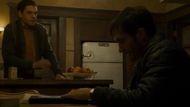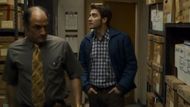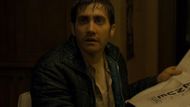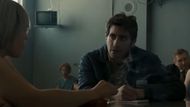David Fincher's Zodiac isn't merely another true-crime thriller; it's a painstaking excavation of obsession, fear, and journalistic doggedness. Alongside this gripping thriller is Robert Graysmith, a cartoonist turned amateur detective, played with subtlety by Jake Gyllenhaal. It is what makes Graysmith interesting, not only his part in tracing leads on the elusive Zodiac killer, but the way he becomes obsessed with the case even when the authorities lose interest. Each of his turns in the movie captures the psychological toll of obsession, as the line between determination and desperation is blurred.
Unlike the standard detective leads, Graysmith is a civilian, not motivated by duty but by curiosity that gets built into obsession. His own character mirrors the haunting hold the Zodiac case had on the Bay Area and the country. His personal life unravels, his professional life takes a turn, and yet he pursues the puzzle with relentless intensity. Through sinister letters, chilling interviews, and ominous encounters, Graysmith is the center of Fincher's atmospheric film.
These seven formative moments reveal not only his courage but his disintegration, making him one of the most memorable true-story heroes in contemporary cinema.
Disclaimer: This entire article is based on the writer's opinion. Readers' discretion is advised.
7 Best Robert Graysmith moments from Zodiac
1. The First Puzzle Obsession

What is harmless curiosity grows the minute Graysmith gazes into the Zodiac's cryptograms. And where others mock at the puzzles, he finds patterns and significance, delving into cipher books and being more fascinated than the reporters and police he is surrounded by. This is where the turning point comes: the Zodiac's puzzle takes hold of Graysmith, and his reserved mind becomes a whirlwind.
Fincher stages these opening scenes with unsettling tranquility, underscoring Graysmith's passive observer status, but his inner life is changing. This quiet fixatedness is like the way true crime can entrap even onlookers. Now, this is how armchair detective work has gone mainstream through the use of the internet crime communities.
2. The Paul Avery Confrontation

When Graysmith badgers Paul Avery, the gritty, cynical journalist, about specifics on the Zodiac, their tension comes to a head. This is not an argument, but rather a confrontation of the difference between Avery's world-weary burnout and Graysmith's new obsession. Avery jokingly tells him to "go home," but Graysmith cannot. It's a battle of ideals: one man crumbling under pressure, the other ascending into obsession.
Now, this scene echoes in our current digital age, where citizen bloggers and true crime podcast hosts conflict with professional doubt. Gyllenhaal and Robert Downey Jr. make the moment compelling, revealing a quiet rivalry that is tragically symbolic.
3. Graysmith Dives into the Evidence Alone

As police interest wanes, Graysmith emerges as the sole man on the Zodiac manhunt. That moment, as he compiles files, talks to witnesses, and begins piecing together timelines for himself, is his turning point. No longer just a curious onlooker, he's now a researcher, investigator, and risk-taker. The film cleverly depicts him consumed, chomping on rubbish food, forgoing sleep, and pushing away his family. His addiction is more than storytelling pit becomes ambient.
This is reflective of real-life events, such as Reddit-driven investigations or Netflix docu-series enthusiasts following cases independently. It's a contemporary reflection on how doggedness can both shed light on truth and dissolve individual boundaries.
4. Basement Scene with Bob Vaughn

Perhaps the most frightening scene in Zodiac, this basement scene is ripped from a horror movie. Graysmith goes to Bob Vaughn to compare handwriting samples, but ominous feelings strike when Vaughn demands that he check the basement. The creaking floorboards, flickering lights, and Vaughn's mysterious demeanor create intolerable tension. And what makes it genius is that nothing explicit occurs, yet you, like Graysmith, sense danger closing in.
This scene is a testament to Fincher's skill at psychological suspense. In retrospect, the terror isn't death, but uncertainty. To modern-day viewers, the basement scene has recourse to the horrific notion that evil doesn't always come in a masked disguise; it can be polite, soothing, and strangely silent.
5. The Phone Call to Linda

As Graysmith's fixation intensifies, the price is personal. In a brief but heartbreaking exchange, he calls Linda and begs for compassion. His voice is frantic, her silence is eloquent, and you can't help but see just how isolated he is now. The case isn't only taking time, it's taking his stability and sanity.
This phone call is an emotional anchor in a film so obsessed with intellect and terror. It's one of the few such moments in crime shows where obsession is portrayed as not exciting, but isolating. To contemporary viewers, it resonates with the way pursuing truth or justice online may at times sacrifice real-life relationships and tranquility.
6. Final Showdown with Toschi in the Diner

In a subdued diner, Graysmith sets out all that he has learned about Arthur Leigh Allen for Inspector Toschi. The scene is quiet but intense, no screaming, no thriller music. Simply two men talking about decades of terror. Graysmith is enthralled but composed, Toschi incredulous but curious. The dynamic between them here is like transferring a baton, with Graysmith picking up where Toschi left off.
It also reflects the frustration with cold cases, so many leads, but no concrete evidence. This diner scene is one that resonates today when numerous cold cases are reopened by dogged digital detectives. It's subdued, but it packs a punch more powerful than any over-the-top reveal.
7. Graysmith Identifies Arthur Leigh Allen

Years afterward, Graysmith enters a hardware store and makes eye contact with Arthur Leigh Allen. No words. No clash. Just a look loaded with meaning. It's chilling because it may be the truth, but it remains unprovable. Allen's placid face is a contrast to Graysmith's piercing stare, highlighting the ways in which some truths in life are sensed and not substantiated.
This conclusion polarizes some but is marvelous in its vagueness. It echoes actual unsolved mysteries in which facts are unclear, but intuition remains. In an age of speculation and theory overload, this quiet acknowledgment stands as one of film's most haunting "unspoken confessions."
Robert Graysmith's odyssey in Zodiac isn't merely a matter of amateur detective work; it's an observation of the ways obsession will distort the line between mission and danger. Through cryptic messages, personal sacrifices, and flashes of pure terror, he becomes the emotional center of the movie. Fincher maps out Graysmith's trajectory not as a tidy conclusion but as an eerie reminder that truth tends to evade closure.
In the age of true crime documentaries and internet sleuths, Graysmith's quest continues to be hauntingly timely. His introspective persistence, inner disintegration, and ultimate gaze still linger, illustrating that some tales don't conclude, they resonate.
Love movies? Try our Box Office Game and Movie Grid Game to test your film knowledge and have some fun!
